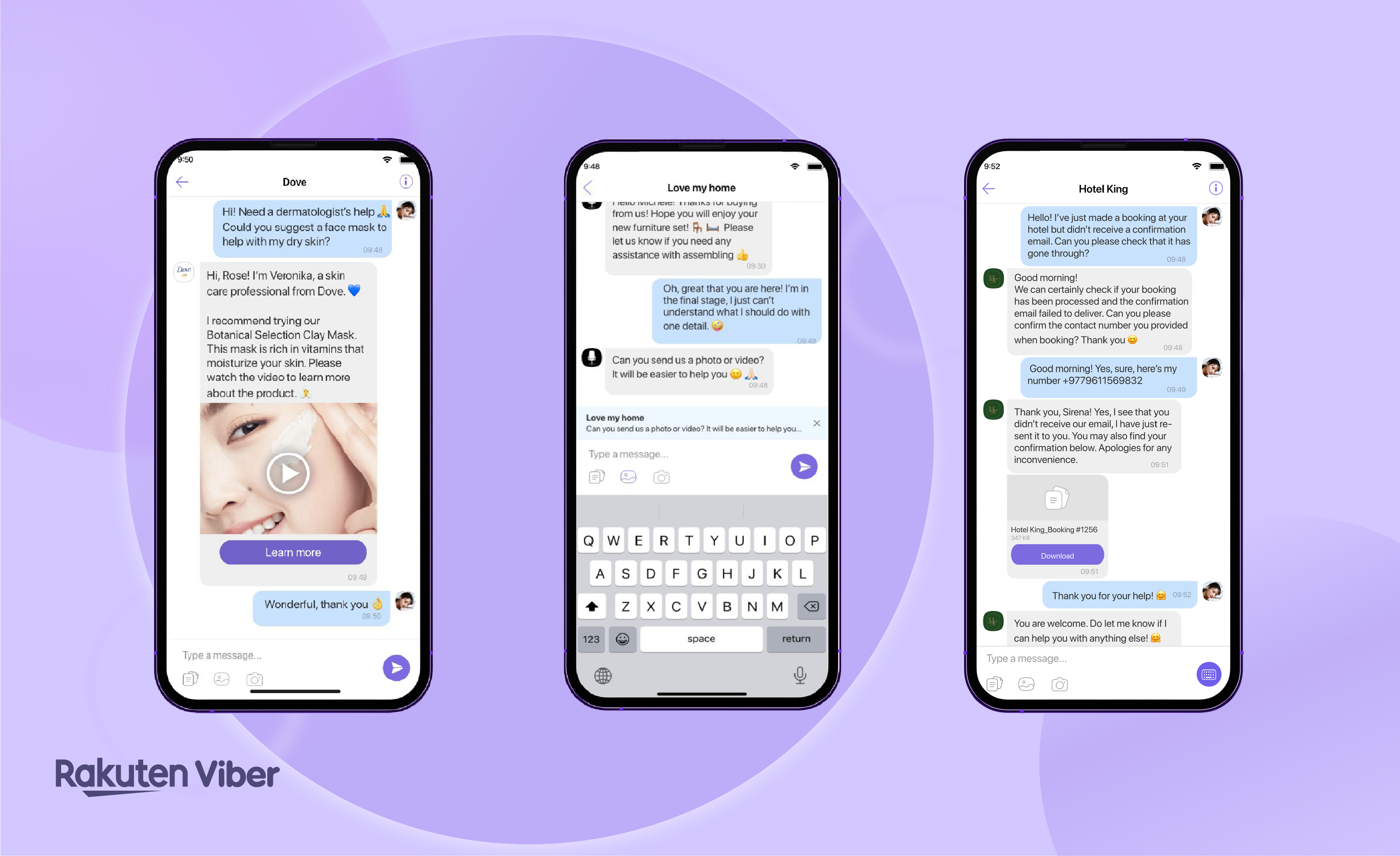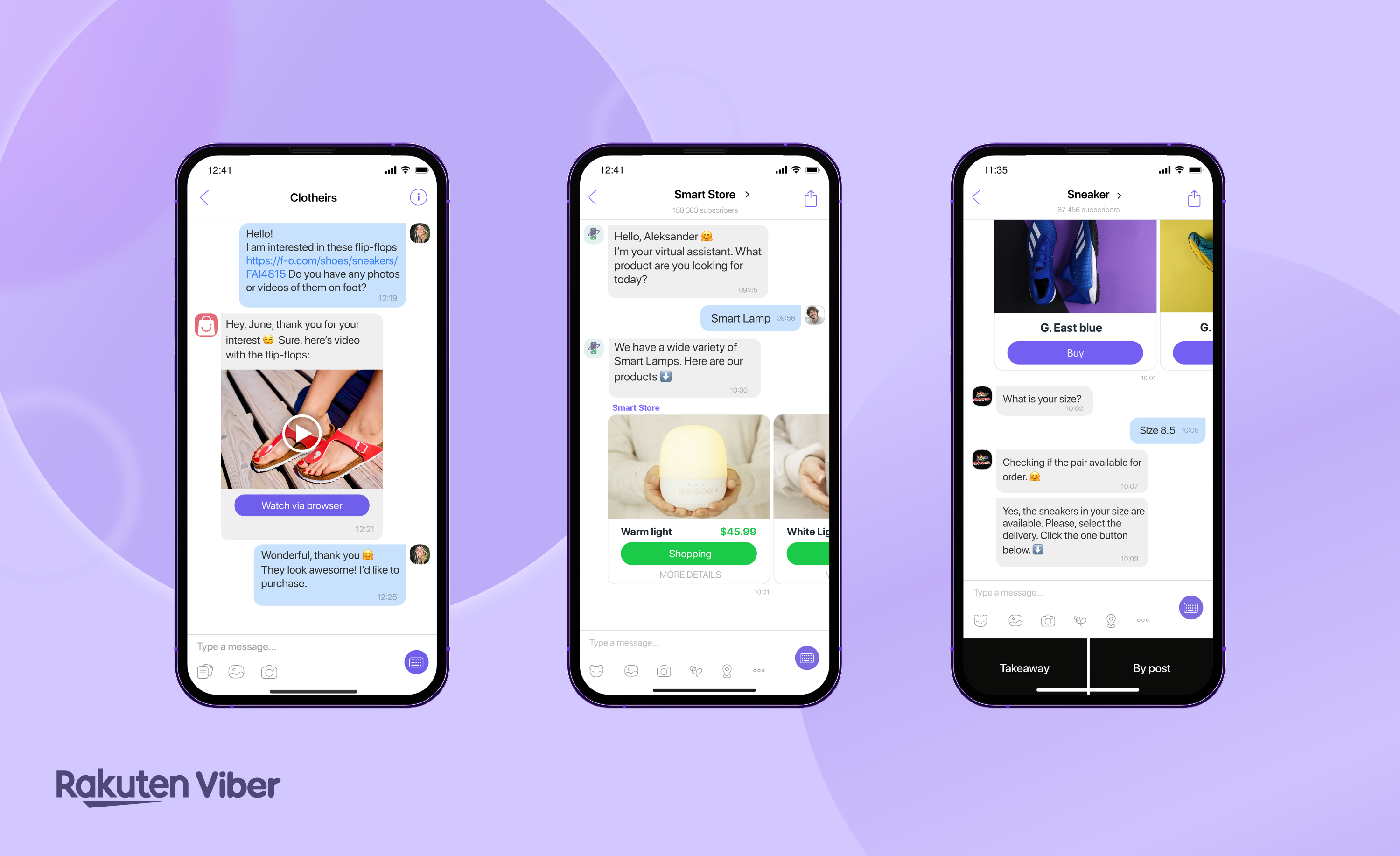When working on this article to explain the aspects and benefits of Conversational Commerce, we thought it might be a good idea to look back at the history of trade – and for a reason, as Conversational Commerce is, in many ways, an evolution of all things commerce.
It all started with the exchange of goods when people would trade things that they had for things that they needed. This was often done through face-to-face transactions, which led to the development of markets. They were usually located in central locations so that citizens from all over the area could easily access them. Over time, markets became more organized and developed into what we now know as stores. Separated into different branches, they were focused on selling various types of goods. Today, there are all sorts of outlets, from small mom-and-pop shops to large department stores. Apart from commerce itself, what all these types of trade have in common is being able to have a conversation between a buyer and a seller.
The most recent development in commerce is online shopping, and people can purchase items from businesses through the internet from anywhere in the world - now, with a few taps on a smartphone, we can buy almost anything we want from the comfort of our homes, workplaces, or even while on vacation. From groceries to gadgets, everything you may want or need is always one click away.
Technologies have revolutionized the way we live and sell, and as a result, there is a new form of sales – Conversational Commerce. In many ways, it is not new because commerce has always been conversational in a physical environment. As described above, people talked and made deals in person since the beginning of time. The key to successful business has always been dialogue, and that hasn't changed with the advent of new technology. What has changed, though, is the way we interact, and the way that sellers (companies and brands) reach out to buyers (customers and consumers).
Now, it's time to combine the best of both worlds, and messaging apps are a perfect tool to do so through the combination of human interaction and technology.
What is Conversational Commerce?
Conversational commerce is a type of retail where businesses use messaging apps to interact with their customers in real-time. It's a way for brands to sell products and services, and also to build and maintain personal relationships with their customers through a more engaging and human experience.
With messaging apps like Rakuten Viber becoming more and more popular, businesses are starting to see a huge potential of using them as a sales and customer service platform. Plus, they offer a number of advantages over traditional e-commerce outlets, including more personal interaction, as well as the ability to provide immediate client assistance and post-sales support directly in the app, making it a natural communication between brands and their customers.
In this blog post, we look at how businesses can use this approach to increase sales.
Rakuten Viber for Conversational Commerce
Rakuten Viber is one of the most popular messaging apps in the world, with over 1 billion downloads on Android alone, and is loved for a simple, fast, and secure experience. It's no surprise that more and more brands are using Viber to connect with their clients thanks to Rakuten Viber's powerful suite of products and services that provides the brand-customer connection and perfectly targeted messages and ads.
Turn Rakuten Viber’s Conversational Messages Into Conversational Commerce
Rakuten Viber’s conversational messages are two-way exchanges that allow customers to ask questions and get answers from businesses and brands, in real time.

Rakuten Viber has a wide range of features that businesses can use to create conversational messages, no matter if those are activated through automated notifications, chatbots, or human agents.
Now, let’s talk about evolving conversational messages – how do you turn a conversation into a conversion? There are a few simple steps.
1. Listen, then improve engagement. It is important to make sure that your potential clients are actually interested in what you're selling to them. Listen to your audience, analyze customer data and ask questions to find out what people are looking for, what their needs are and how you can help them. Once you've established a connection, provide your clients with a solution. Show people that they can rely on you and that you truly understand their needs. Make it easy for them to take the next step, whether that's making a purchase or scheduling a consultation.
2. Prompt in-conversation purchases. Be sure to maximize the effect from the fact that customers are already engaged in a conversation with your brand, and offer them an opportunity to buy a product right there during the conversation, without having them to go through discovery and search, or purchasing from a competitor.
3. Have a script on how to direct a client to purchase. Keep it natural: the key to successful conversational commerce is to keep messages genuine and not too salesy. Be friendly and helpful, and let the customer guide the conversation. Asking questions is great to keep the dialogue going and to get people to engage with your brand. Be sure to ask about things that are relevant to the product or service you're selling. Besides, use phrases and statements that will encourage the person to buy your product or service.
4. Develop a list of intent-related signals that would mean the conversation needs to be transitioned from a chatbot to a live representative. Some examples of such cues include:
- “I'm interested in buying your product/service”
- “I need more information before I make a purchase”
- “I'm ready to buy now”
- “I'm not interested in buying right now”
Or asking about pricing, shipping, product availability or payment methods.
5. Upscale your chatbot from basic support to a more advanced version. As your business grows, so should your tools. This will allow you to provide a better experience for your customers, offer more personalized support and get more insights into your audience and their behavior. Rakuten Viber Chatbots can save you time and money, which you can then reinvest into your company’s growth.

6. Be ready to take an order on the spot. This is one of the advantages of conversational messages – clients can place an order without having to leave the conversation. Be responsive – people expect a quick reaction when they contact a brand they're interested in. Make sure you have the resources in place to answer everyone in a timely manner. Keep the conversation focused on the customer – the goal is to help people accomplish their objectives, so be client-centric.
7. Ensure that your live chat agents are trained to handle order-related queries. When customers are shopping online, they want to be able to get help with any questions or problems they have as quickly as possible. That's why it's important for brands to train their representatives to handle all corresponding issues when working with conversational messages. With the right approach, your agents will be able to handle customer questions and concerns efficiently and effectively, providing a great experience that will keep people coming back for more.
8. Be ready to collect customer information at the end of the chat. There are a few ways to do this, such as asking for an email address. Besides, you can include a link to a survey or questionnaire that clients can fill out after the chat. This way, you'll be able to better understand your customers and their needs, which will help you improve your conversational messages in the future, and provide people with a better overall experience. Make sure you have a system in place to actually collect the information. This could be a CRM or even a simple spreadsheet, either way, you need to be able to easily track and store the data you gather. And don’t forget to always get customer consent for any data you collect.
Conversational Commerce And In-app Payments
Does in-app conversational commerce mean companies can sell only when they can accept payments in-app? The answer is both yes and no.
We are excited to announce that payments on Rakuten Viber are now available in several countries (currently Greece and Gernamy). In the upcoming future, this service will be rolling out to the global market, and will allow brands easy and secure in-app payments. You can also use Rakuten Viber Chatbot payment solutions which are easy to integrate and use, or you can also direct the customer to your website or app for checkout (and then continue the post-transaction conversation in Rakuten Viber), this is also possible. This way, you can provide a seamless checkout customer experience and still keep them engaged with your brand.

Being able to communicate is what differentiates humans from animals, and it is what has allowed us to become the dominant species on the planet. It is through communication that we have been able to create the complex societies that we live in today. And in modern times, this is how we build businesses and grow brands. A conversation is what drives our economy, allows us to drive sales and attract new clients.
Launching conversational commerce requires an effort, but it is not that significant compared to the boost in sales you may get. We are ready to bet that the conversion rate you will be getting with conversational commerce will be much higher than your other channels.
Get in touch with our team to learn more about Rakuten Viber for marketers and conversational commerce.




